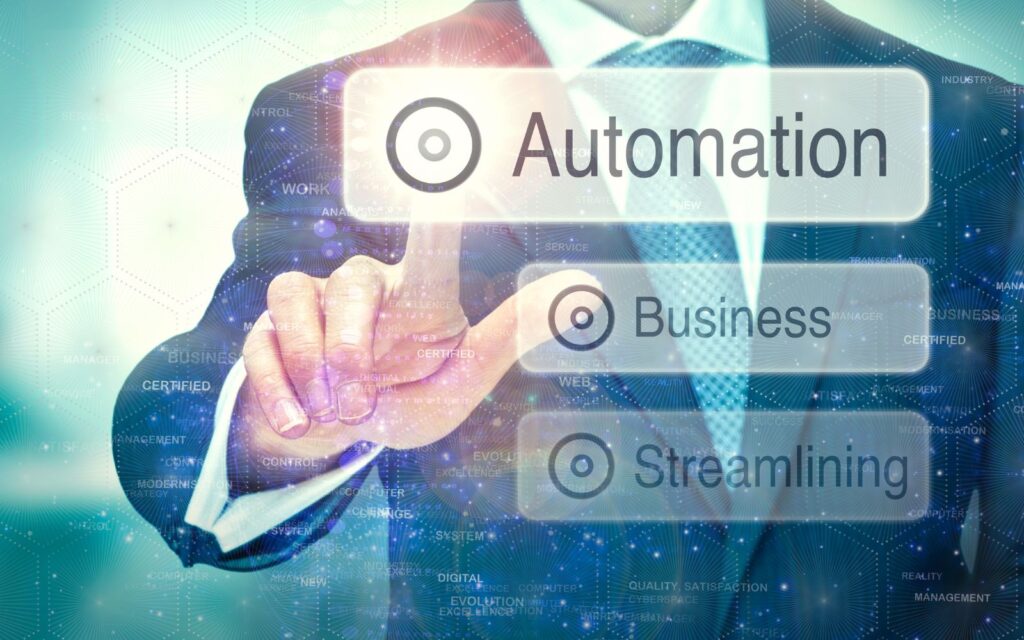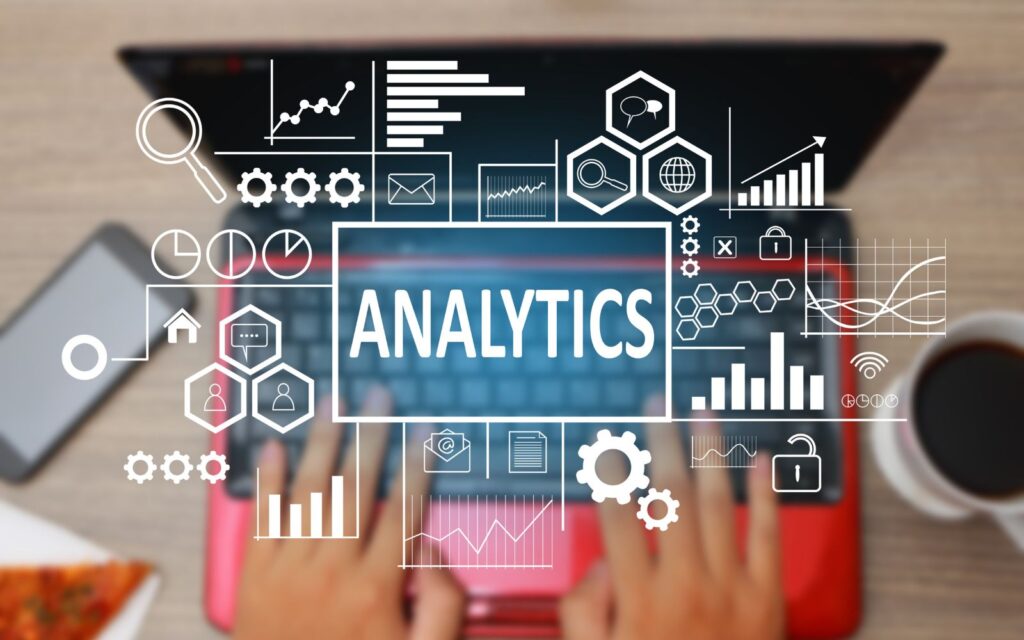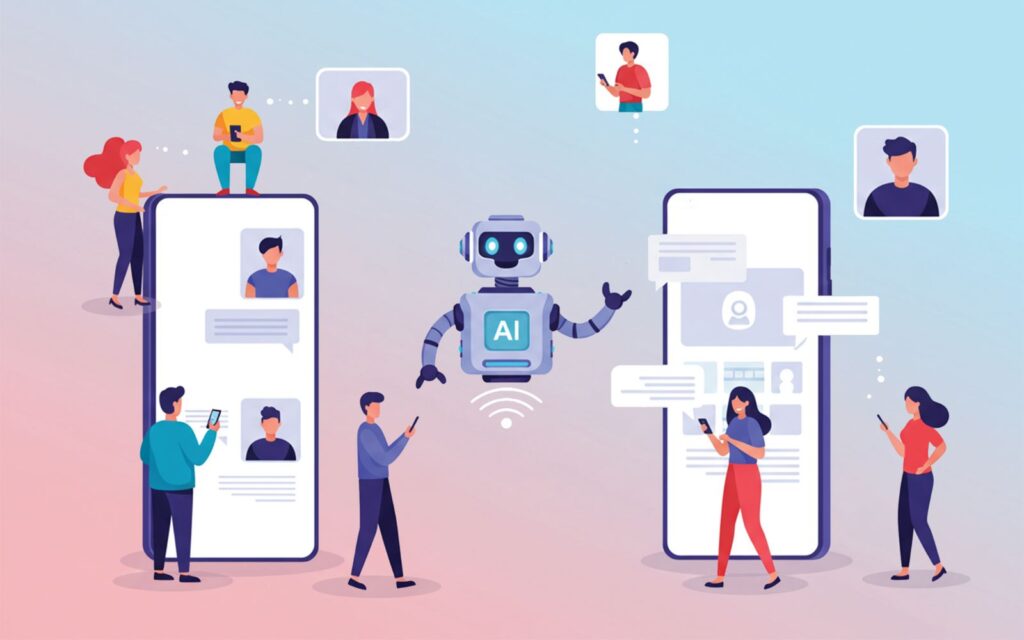The Role of AI-Powered Tools in Modern Workplaces

The role of AI-powered tools in modern workplaces is no longer a futuristic idea; it is a topical reality that profoundly shapes the current state of work in significant and lasting ways.
From automating tasks to providing deep insights into items and fostering cooperation, AI-powered tools have emerged in today’s work environment.
As agencies contribute to rapid technical changes, AI acts as both a catalyst and a compass, helping agencies become tighter, durable, and aggressive.
AI is now deeply embedded in various industrial business enterprise features – from human resources and customer service to sales, marketing, operations, and beyond.
This shift isn’t merely about replacing human responsibilities; instead, it’s about augmenting human intelligence and improving productivity.
For startups, SMEs, and large groups alike, embracing AI-powered tools has proven crucial to thriving in a digitally driven financial system.
This article examines how AI tools are being utilized across various sectors, the benefits they offer, the challenges they pose, and what the future of AI integration in the workplace might look like.
Whether you are a business owner, group leader, or employee, understanding the role of AI in the workplace enables you to make informed choices and prepare for the evolving professional landscape.
Key Takeaway – The Role of AI-Powered Tools in Modern Workplaces
- AI is reshaping work – it’s not replacing people, but rather helping them by automating tasks, enhancing decision-making, and facilitating smoother collaboration.
- AI is everywhere – from HR and customer service to marketing and cybersecurity – it has become a key part of how companies run and stay competitive.
- Adopting AI is crucial – while there are challenges such as data privacy and ethical concerns, leveraging AI is essential for success in our increasingly digital world.
1. AI in Task Automation: Reducing Manual Workload

One of the most significant roles AI plays in modern workplaces is automating repetitive and mundane tasks.
Tasks that involve gaining access to information, processing bills, filtering emails, scheduling, and reporting can now be handled more efficiently with an AI-driven software program.
This shift is not the best in terms of lowering the time personnel spend on low-value activities, but it also minimizes the potential for human mistakes.
For instance, Robotic Process Automation (RPA) software can handle massive volumes of transactions throughout systems without fatigue or inconsistency.
This empowers employees to delve more deeply into strategic work that requires critical thinking and creativity. In finance departments, AI tools reconcile accounts and flag anomalies, while in HR, chatbots schedule interviews and respond to candidate inquiries.
By offloading ordinary duties, agencies can also scale operations without a proportional increase in human resources, thereby enhancing cost-effectiveness while meeting the stringent requirements of accuracy.
2. Smarter Decision-Making with AI-Powered Analytics

AI tools excel at processing significant quantities of statistics and transforming them into actionable insights. Advanced analytics structures, powered by AI, can analyze client behavior, market trends, sales styles, and employee productivity to support informed decision-making.
In income and advertising, predictive analytics can identify which leads are most likely to convert, while in operations, AI can assist in forecasting demand and optimizing inventory management.
HR departments utilize AI to evaluate worker engagement, discover skill gaps, and decrease turnover through predictive modeling.
Moreover, industrial organisation intelligence structures with AI capabilities offer real-time dashboards and insightful analysis, allowing leaders to respond quickly to changing conditions.
The result is more knowledgeable decision-making, which enhances both short-term performance and long-term strategy.
3. AI in Communication and Collaboration Tools

Modern workplaces depend closely on collaboration, whether among in-house teams or across international organizations. AI-powered communication tools are redefining how we engage and present information.
Applications like Microsoft Teams, Zoom, and Slack now incorporate AI capabilities, including real-time transcription, language translation, and intelligent summary generation.
AI can also propose assembly times, tune movement items, or even display screen engagement stages during calls. In record collaboration, AI can suggest edits, recognize duplicate content, and summarize lengthy text, saving employees significant time.
Natural Language Processing (NLP) has made it easier to bridge communication gaps in multinational groups, offering real-time translation and context-aware hints. This not only improves efficiency but also enables fostering a more inclusive workplace.
4. AI in Human Resource Management and Recruitment

Recruiting, onboarding, and managing skills have become drastically more data-driven, thanks to advancements in AI. Resume screening systems use AI algorithms to experiment and filter applications based on key phrases, skills, interests, and cultural background.
Virtual recruitment assistants, also known as chatbots, engage with candidates, schedule interviews, and provide solution FAQs, thereby reducing the HR team’s workload.
AI also enables the reduction of subconscious bias in hiring by standardizing the evaluation system. Predictive hiring models can identify which applicants are more likely to succeed in a specific role based on past performance data.
For employee development, AI tools tune performance, advocate for educational modules, or even suggest inner roles to guide professional growth.
The integration of tools like a resume builder app in internal professional portals additionally supports employees in updating their resumes for internal opportunities, simplifying advertising programs, and succession planning.
5. Personalized Employee Experiences with AI

AI isn’t just transforming how agencies operate – it’s additionally reshaping the employee experience. By leveraging facts, AI can customize examination paths, suggest health packages, and tailor conversations based on individual choices.
For instance, AI-driven Learning Management Systems (LMS) recommend guides based on an employee’s position, skill level, and overall performance.
Virtual well-being assistants track mood, promote mindfulness, and provide customized fitness tips. Chatbots help personnel navigate HR policies, access payroll details, or request time off – all with minimal friction.
These personalized research efforts enhance engagement, improve retention, and foster a culture where employees feel valued and supported.
6. Enhanced Customer Service Through AI Chatbots and Assistants
AI-powered chatbots have revolutionized customer service. These digital assistants can handle a large number of queries concurrently, providing 24/7 assistance with rapid and consistent responses.
From answering fundamental inquiries to processing returns or guiding customers through troubleshooting, chatbots unburden human sellers from added complicated interactions.
AI systems research over the years has involved natural language processing and device learning, becoming more adept at understanding knowledge context and sentiment.
Tools like IBM Watson, Google Dialogflow, and Zendesk AI have made it feasible for even small businesses to offer enterprise-level service.
Moreover, AI can analyze client interactions to identify key traits, predict potential churn, and suggest targeted product improvements. These insights are worthwhile in shaping purchaser-centric techniques.
7. AI for Cybersecurity and Risk Management
With cyber threats on the rise, AI is playing a crucial role in enhancing administrative center protection. AI-powered cybersecurity systems reveal community traffic in real-time, detect unusual patterns, and respond to potential threats automatically.
Machine learning algorithms are educated to understand phishing attacks, malware, and data breaches. These gears can adapt as new threats emerge, presenting proactive protection in place of a reactive response.
Risk management departments utilize AI to assess economic dangers, ensure compliance, and detect fraud. By automating these abilities, groups protect their property, preserve patron loyalty, and reduce support overhead.
8. AI in Project and Workflow Management
Project control structures have become smarter, way to AI. Tools like Asana, Monday.com, and Trello now offer advanced capabilities that prioritize tasks, estimate completion dates, and identify workflow bottlenecks.
AI can recommend who should lead a project based on bandwidth and skill set, alert assignment leads about capacity delays, and advise on modifications to effective resource allocation. These insights make project execution even more efficient and boost team performance.
Furthermore, AI integrations with calendars, conversation devices, and record-keeping systems create a seamless work environment, streamlining project delivery from planning to completion.
9. Challenges of AI Adoption in Workplaces
While the benefits of AI in the workplace are numerous, groups must navigate several challenges. These encompass:
- Data Privacy Concerns: As AI is closely reliant on client statistics, maintaining privacy and ensuring compliance with regulations such as the GDPR is crucial.
- Skill Gaps: Not all personnel are tech-savvy. Organizations must invest in education to support agencies in identifying and effectively utilizing AI tools.
- Integration Complexity: Integrating AI with cutting-edge structures can be complicated and expensive, particularly for legacy infrastructure.
- Ethical Considerations: An ongoing debate exists regarding the ethical use of AI, particularly in hiring, surveillance, and decision-making processes.
To overcome these hurdles, agencies require clear guidance, ongoing education, and a thoughtful approach to AI implementation.
10. The Future of AI in the Workplace
As AI technology continues to evolve, its role within the global commercial sector will continue to expand. We can anticipate:
- Greater Use of Generative AI: Tools that could generate content, code, or layouts are becoming increasingly more mainstream.
- Hyper-Personalized Workflows: AI will tailor workflows to the purchaser’s needs and automate tasks before they’re initiated.
- AI-Powered Leadership Tools: Management dashboards will provide deeper insights into team morale, universal performance, and productivity tendencies.
- Enhanced Collaboration Between Humans and Machines: Rather than changing jobs, AI will augment human abilities by automating mundane tasks and enabling creativity and innovation.
AI isn’t a hazard; however, it is an enabler, reworking how we work and opening new avenues for innovation, inclusion, and efficiency.
Summary
AI-powered tools are revolutionizing the way agencies operate, collaborate, and compete. From automation and analytics to customized worker stories and real-time customer service, AI is deeply integrated into the fabric of today’s business.
As the era continues to evolve, groups that proactively adopt AI will position themselves for sustained achievement and resilience in an increasingly digital global environment.
While stressful conditions, such as record privacy concerns, ability improvement, and ethical worries, need to be addressed, the advantages of AI-efficiency, accuracy, scalability, and innovation far outweigh the risks. Organizations must view AI as a strategic asset that enhances human skills and boosts overall productivity.
In today’s hybrid, rapidly paced work environment, integrating innovative solutions – whether for recruitment, communication, or internal mobility – can make a tangible difference.
For example, even using a resume builder app to streamline internal promotions or pastime packages within the enterprise reflects how AI can enhance workflows across departments. Embracing AI is not optional; it’s vital to building the workplaces of the future.
Frequently Asked Questions
What are AI-powered tools, and how do they impact administrative center productivity?
AI-powered gear utilizes artificial intelligence to automate tasks, analyze data, and inform decision-making. They enhance productivity by decreasing manual labor, streamlining operations, and allowing personnel to focus on higher-level responsibilities.
Which AI tools are most commonly utilized in today’s workplaces?
Popular AI tools include digital assistants (such as ChatGPT), AI-driven CRM systems (including Salesforce Einstein), AI-powered project management tools (like Notion AI), and recruitment systems that utilize machine learning to evaluate candidates.
Will AI tools replace human employees?
Not absolutely. AI gear is designed to augment human roles, not replace them. They automate repetitive tasks, allowing employees to focus on the creative, strategic, and interpersonal aspects of their work. However, a few roles may additionally evolve, requiring new capabilities.
What challenges do organizations face while adopting AI in the workplace?
Common challenges include high implementation costs, privacy concerns, potential algorithmic bias, resistance to trade, and the need for upskilling personnel to work effectively with new technology.
How can agencies prepare their teams for AI integration?
Businesses should invest in worker education, promote digital literacy, foster openness to exchange, and establish clear guidelines for the responsible use of artificial intelligence (AI). Involving personnel early in the transition process facilitates building consideration and eases adoption.